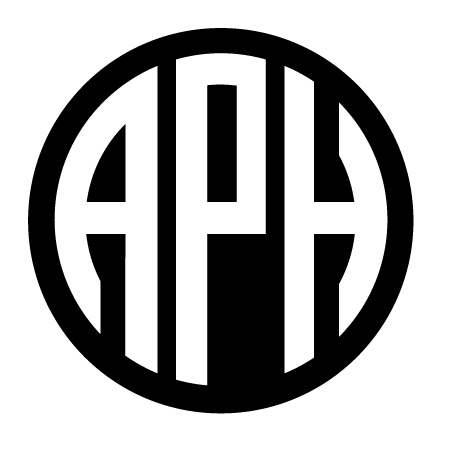Florida State University College of Education
THE EFFECTS OF PEER TUTORING ON THE ACADEMIC LEARNING TIME IN PHYSICAL EDUCATION (ALT-PE) OF ELEMENTARY SCHOOL STUDENTS WITH VISUAL IMPAIRMENTS IN INCLUSIVE PHYSICAL EDUCATION CLASSES
BY MARGARITA FERNANDEZ VIVO
A Dissertation submitted to the Department of Sport Management, Recreation Management, and Physical Education in partial fulfillment of the requirements for the degree of Doctor of Philosophy
Semester Approved
Fall Semester, 2002.
This article is reproduced with permission. Any further use requires permission from the copyright holder.
ABSTRACT
Academic learning time in physical education has been studied extensively as a measure of students’ achievement. The more time the students are engaged in activities appropriate to their skill level, the greater the learning (Beckett, 1989; Silverman, 1985; Silverman, Devillier, & Ramirez, 1991). Academic learning time of students with disabilities has also been studied for several years. These studies have shown that the academic learning time levels of students with disabilities tends to be lower than their non-disabled peers (Vogler, van der Mars, Cusimano, & Darst, 1992; Temple & Walkley, 1999). DePaepe (1985) indicated that the use of peer tutoring has helped increase academic learning time levels of students with disabilities.
The purpose of this study was to examine the effects of peer tutoring on the academic learning time in physical education of students in an elementary inclusive setting. The following questions guided this investigation: a) Is there a difference in the academic learning time in physical education (ALT-PE) levels of students with visual impairments and targeted students in physical education classes?, and b) Will the academic learning time in physical education (ALT-PE) levels of the students with visual impairments and the targeted peers change as a result of peer tutoring in physical education classes?
In order to address this purpose, a single subject design, specifically an A-B-A withdrawal design was used. The ALT-PE Observation Instrument was used to code the ALT-PE levels of the targeted students during the three phases of the study and a peer tutoring program was implemented as an intervention. Visual analysis was used to inspect and interpret ALT-PE data paths across subjects. Friedman’s Test was used to compare observations repeated on the same subjects across the phases.
The test statistics of Chi Square showed a difference between levels of motor appropriate that were significant among the students (high skilled, low skilled, and students with visual impairments) and demonstrated that the motor appropriate intervals changed significantly across the phases (first baseline, intervention, and second baseline) of the study.
Conclusions
There are some general conclusions of this study. Based on the results, the first conclusion is that sighted students in this study tend to have higher levels of MA than do students with visual impairments. There are some possible reasons for this tendency. First, the wide variability in content makes it difficult to provide practice at appropriate ability levels for every student. Second, the lack of knowledge of how to individualize lessons for students with visual disabilities is another factor that affects the motor engagement intervals in physical education classes.
The students with visual impairments and the low skilled students presented similar numbers of MA, MI, and MS intervals throughout the study. Certainly, being low skilled could be a limitation when the lesson is not appropriately developed. Frequently it is the task organization and the use of inappropriate equipment that impacts the number of motor engaged intervals, not the nature of the content or the students’ ability levels.
The second conclusion is that the use of peer tutoring in physical education proved to be a successful strategy to include students with visual impairments in the physical education class and to increase their ALT-PE levels. The ALT-PE levels of the sighted students also increased during the use of peer tutoring.
The results of this study lend support to the conclusion that students with visual impairments have the same potential for developing motor skills and fitness as their peers (Blessing, McCrimmon, Stovall, & Williford, 1993; Kobberling, Jankowski, & Leger, 1991; Lieberman, & Houston-Wilson, 1999; Seelye, 1983). The use of peer tutoring gave them the opportunity to successfully participate in physical education activities. If students with visual impairments have the opportunity to participate in physical education programs that provide them with the appropriate instructional strategies and activities to fit their special needs, they are more likely to develop to their maximum potential.
The third conclusion is that the use of peer tutors will increase the amount of MS intervals. In this particular study, there were not MS intervals during the first baseline. During the intervention phase the amount MS intervals increased significantly. It is important to address that after the peer tutoring was removed the students were giving verbal cues, positive and specific feedback and demonstrating to their partners without being instructed by the teacher. Once this strategy has been learned, it is an excellent tool in the teaching/learning process. The teachers had not use peer tutoring strategies before this study. When asked by the researcher about his experience with peer tutoring the male teacher responded: "I will definitely use it again and again. It just creates another set of eyes". To the same question the female teacher responded: "It opened my eyes a little bit and made me think through things a little more, so I would say there is nothing but positive things to say".
Based on the teachers’ interviews, peer tutoring is a very useful tool to include students with disabilities in physical education. For instance, the female teacher expressed that "I think it was a really neat thing. I had not really thought through how the students would feel about having the information come from another student rather than from the teacher every time and I think they were a lot more receptive as what to other students were saying than hearing it from me all the time". On the other hand the male teacher said "I would use it with any type of student. I think that it provides a very positive experience for the student that is receiving, shat is peer teaching, and for the student that is giving it because when they see success in that person, it provides an emotional feeling that they feel success in helping somebody".
Some of the advantages of using peer tutors as stated by the teachers are "another set of eyes", and that "the students feel much more part of the class when they are working with another student". The female teacher added: "I didn’t have to talk quite as much. They were hearing it (feedback) from each other while they were practicing, so I think it ups their activity time".
Recommendations
This study utilized a single subject design with nine participants and focused on students with visual impairments, and their ALT-PE levels. The results of this study provide valuable information on the effect of peer tutoring on the academic learning time in physical education of students with visual impairments in inclusive elementary settings.
Based on the results of this study, a recommendation for the K-12 teachers is to use peer tutoring not only to include students with visual disabilities’ in their regular physical education classes but also to increase the ALT-PE levels of students in classrooms without students with disabilities. In addition, teachers have to consider that the students need to know the components of the skill and how to give positive and corrective feedback; also the teachers need to provide them with plenty of opportunities to practice their roles. A recommendation for teacher education programs responsible of preparing effective physical education teachers is to provide the students with disability awareness activities in their classes. These activities involve having students without disabilities simulate a student with a disability (i.e. jump rope blindfolded). These activities give the students without disabilities the opportunity to experience a limitation and be more sensitive to the needs of students with disabilities. Teacher preparation programs should teach how to develop a peer tutoring program in physical education and provide the students with some hands-on experience. In addition, teacher preparation programs need to look for practicum sites that include students with visual impairments in order to give the preservice teacher first hand experience prior to leaving the program.
Recommendations for future research would include: (a) a replication of this study with other students with visual impairments to confirm the effects of peer tutoring programs, (b) a study using other types of peer tutoring programs such as cross-aged, (c) a qualitative analysis of the students’ self-esteem and self-efficacy during the implementation of peer tutoring program, (d) a replication of this study in a secondary inclusive setting, and (e) a more in depth qualitative analysis of teachers’ attitudes and perceptions of the use of peer tutoring as a strategy to include students with disabilities in physical education.
To order a complete copy of this dissertation, contact UMI Dissertation Services.


